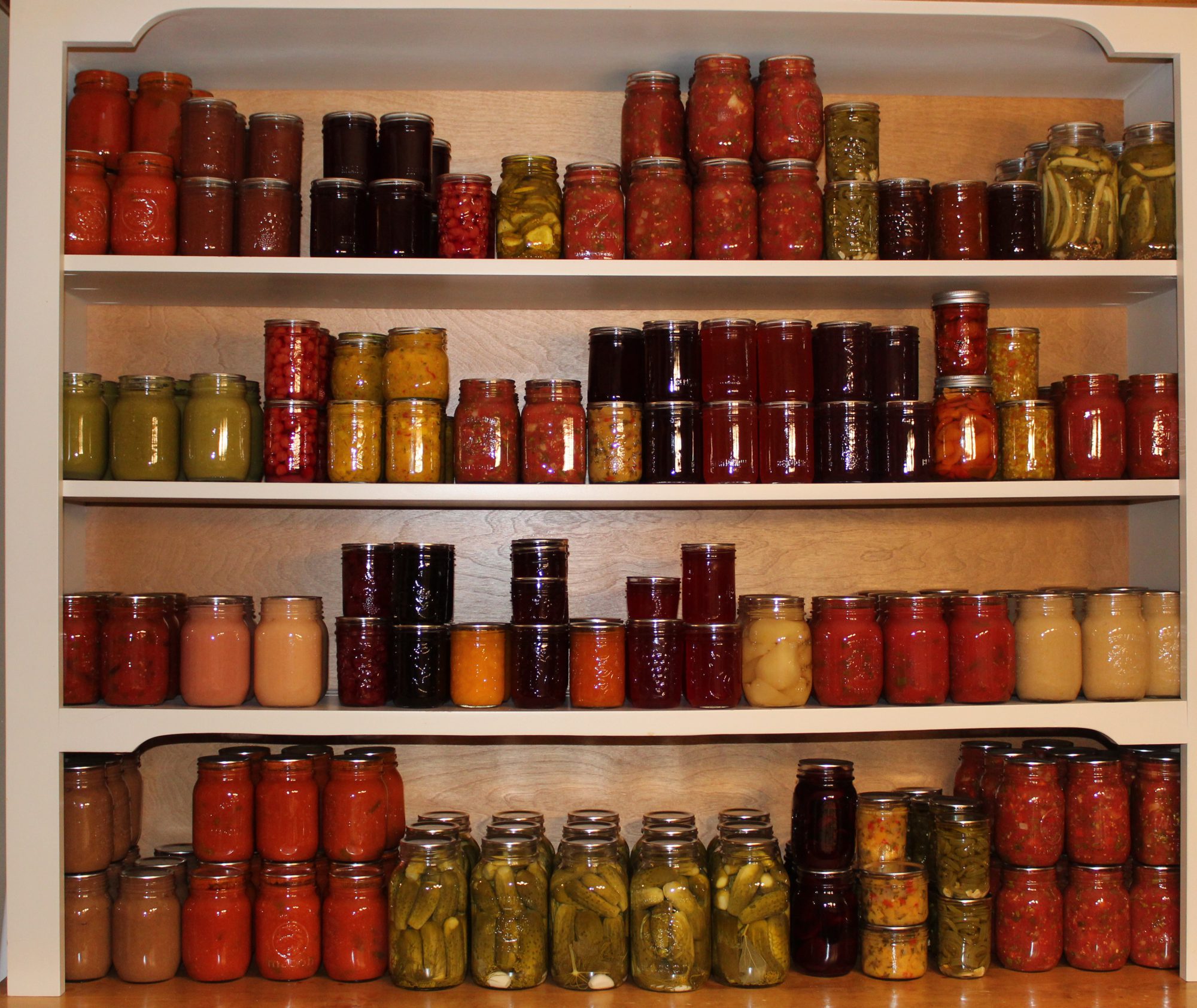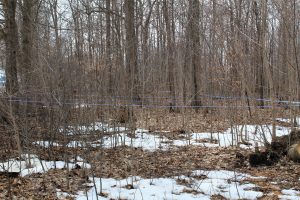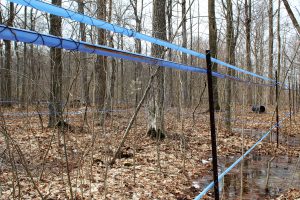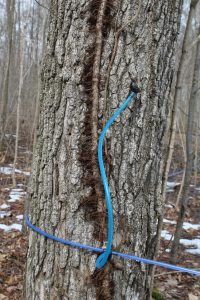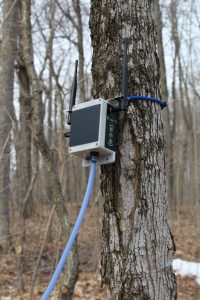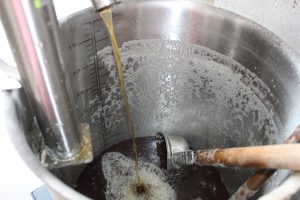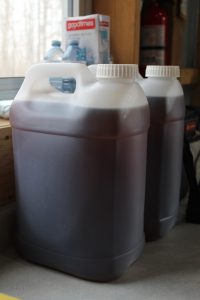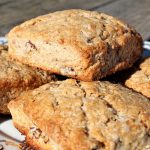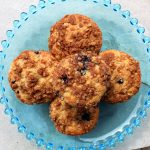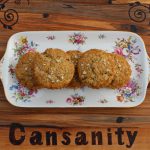
When you live where fresh maple syrup is produced (like I do), you look forward to the month of March. Roadside stands advertise fresh maple syrup, and the pancake houses are open!
Earlier this month, I had the pleasure of visiting my friend Jim Lumsden and his son Mike at their farm, Lumsden Brothers Maple Syrup ,to see first hand how his family makes this golden Canadian treasure. Situated on 20 acres of land, his family has been making maple syrup for over 100 years, and, as I saw, they have it down to a science!
The set up of the production actually starts in January with the unravelling of 18,000 feet (3.4 miles) of four seasons tubing, which is made out of 100% resin. Each piece of tubing is numbered and labeled and is attached to a specific tree in the maple sugarbush. These lines are cleaned out with a solution of 70/30 alcohol to water each year and reused, making this an environmentally friendly operation. This complex maze of tubing, in the case of Lumsden Brothers Maple Syrup farm, includes specific hookups to about 1,100 trees.
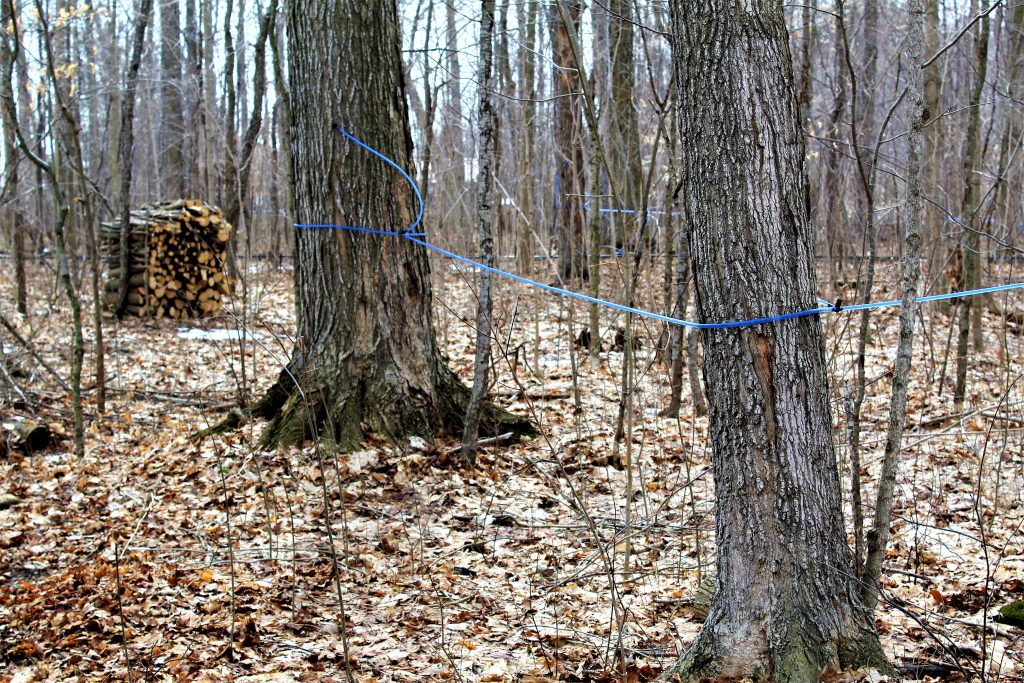
A tree can be tapped when its diameter of the tree reaches 10″, and when the diameter is 18″, the tree can support two taps. For the health of any tree over 18″, at most two taps can be installed each year. So, in the case of Jim’s maple farm, he installs 1,435 taps!
To keep the tree nice and healthy, it is important that the taps occur in a different spot on the tree each year. In fact, you would have to wait about 50 years before you can tap into the same spot.
Once the overnight temperature does not go below -4°C and the daytime temperature stays above 5°C, the sap will flow and the process of collecting the sap can start.
The system used to collect the sap is quite nifty. Collection is by vacuum and the pump is set to pull 25 lbs. of sap and is set to operate as long as the tree’s sap is running. The vacuum pump is set to turn off automatically when the air temperature hits 0°C .
The sap is collected and then, using reverse osmosis, 55% of the water is removed. Then the sap enters a wood-fired evaporator which is 3 feet wide and 13 feet long. It evaporates 90 gallons of water per hour!
It takes approximately 3 hours from the time a drop enters one end of the evaporator until it condenses and accumulates enough to be able to draw off a batch of syrup.
The syrup is ready when the temperature reaches 219°F and is stored in 34-gallon stainless steel barrels or 10-litre plastic jugs in the freezer until ready to bottle for sale.
There are four grades of maple syrup: golden, amber, dark and very dark. You get these shades naturally from the tree because the first sap to come out of the trees produces the lightest colour which is the golden and every week further into the season a darker syrup is produced. So, at the end of the sugaring season you will get the darkest syrup.
Now let’s talk about all the fantastic ways you can use maple syrup! Typically, the golden is used to make candy and confections, the amber is what most people use for pancakes and waffles and the dark and very dark are fantastic in cooking and baking. Each shade of syrup has its own unique flavour so if you get a chance to sample before purchasing, do so because you might find that for your palate you prefer one shade over another.
To learn how to make “Maple Pecan Scones” check out this video.
And, here are three of my favourite baking recipes that use maple syrup:
